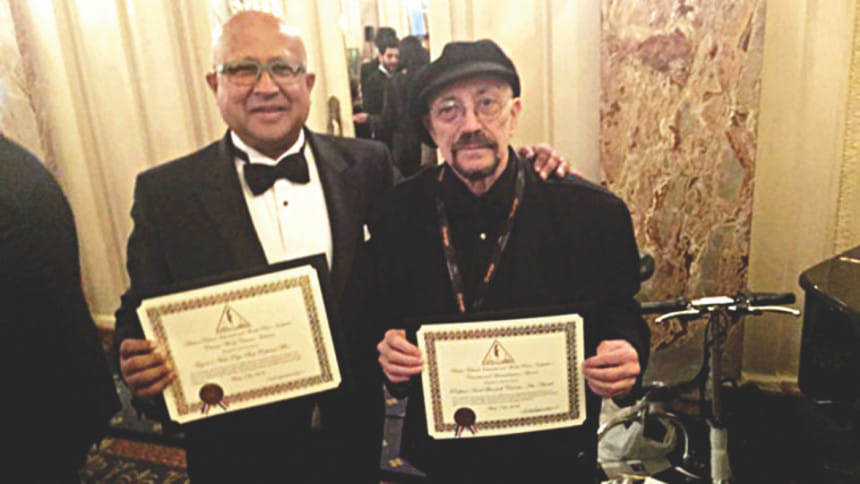Taking Tagore to Cannes

Cannes - the very name conjures up images of movie star glamour, unalloyed creativity, and cinema as it should be - artistic, visually captivating, and incorporating a language that is altogether in danger of getting lost in a tsunami of reality TV and franchise filmmaking. Every year in May, this quintessential resort town in the South of France plays host to the Cannes Film Festival. It isn't just another stop on the festival circuit. Cannes is famous for launching many a star into world renown, from 60s French siren Brigitte Bardot to Abbas Kiarostami, the acclaimed Iranian director.
For most filmmakers, Cannes is the beating heart of their craft - mainly for its artistic ethos that rewards directors and producers for their vision, and where they take their craft, rather than how much they can boast in box office takings. It's a place where you feel Rabindranath Tagore, with his natural charisma and humanist outlook -- would have belonged. Tagore himself was well-travelled of course, but the festival itself started its journey a bit too late for him - in 1946, five years after his death.
The Kabiguru certainly took an interest in film, and the possibilities inherent to the medium. But the film industry was still nascent in this part of the world during his lifetime. It isn't very well known, but Tagore did still manage to make a foray into filmmaking at the insistence of producer BN Sircar. Unfortunately, it failed to enjoy a run worthy of its maker's stature. Just a year after it was made, it was destroyed in a 1933 fire in the warehouse of New Theatres, Calcutta (now Kolkata).
All the more reason for filmgoers, as well as Tagore aficionados, to sit up and take notice of a 3D colour recreation of the only film Tagore ever made, “Natir Puja” (1932), that was unveiled in this year's Cannes Film Market. Professor Karl Bardosh, Hungarian-born American academic and filmmaker, has brought alive the film that provides another fascinating insight into the creative vision of Bengal's first Nobel laureate.
Bardosh's interpretation of the dance-drama that Tagore wrote in 1926 for the stage at the Jorasanko Thakurbari is titled “Natir Puja – The Court Dancer”, and features Sujata Awon Pradhan of Kolkata, where she heads the dance group Nrityalok, in the lead role. She choreographed herself, with Jayati Chakraborty, a leading exponent of Rabindra Sangeet in West Bengal, as the playback singer. Renowned Dutch cinematographer Leonard Retel Helmrich, the master of the 'single-camera shot' technique, was roped in as cinematographer. Tagore's script is based on a Buddhist tale that goes back 2400 years.
Unsurprisingly, the message it delivers is of religious tolerance, and that fact alone should be enough to ensure its continued relevance in this day and age. The fact that it gives Tagore fans an opportunity to catch a glimpse of what their favourite bard may have envisioned in another, arguably more encompassing medium than what they are used to with his poetry, prose and lyrics, makes it even more intriguing.
Enayetullah Khan is Editor-in-Chief of UNB, and executive producer of “Natir Puja”.

 For all latest news, follow The Daily Star's Google News channel.
For all latest news, follow The Daily Star's Google News channel. 



Comments